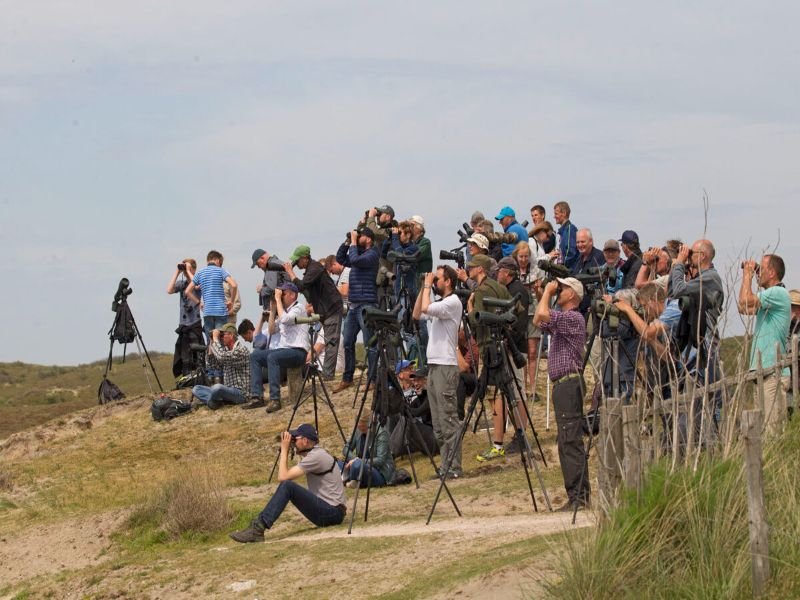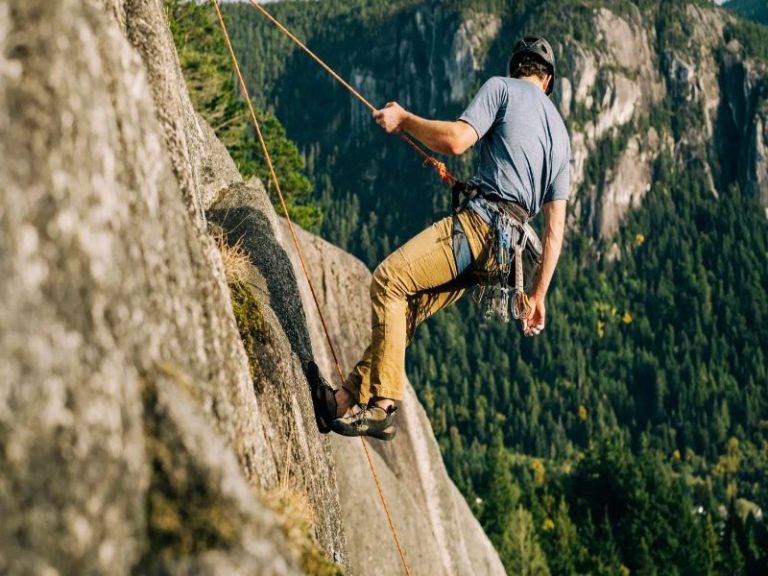Birdwatching for Beginners
Discover the joys of birdwatching for beginners. Learn essential techniques, gear, and tips for a rewarding introduction to the world of birds in this comprehensive guide.
Birdwatching is a delightful hobby that allows you to connect with nature and observe the fascinating world of birds. Whether you’re a nature enthusiast or just looking for a peaceful and rewarding outdoor activity, birdwatching can be a fulfilling pastime.
Birdwatching for Beginners
In this guide for beginners, we’ll take you through the basics of birdwatching, from getting started to some useful tips for a successful birdwatching experience.
Getting Started with Birdwatching
Birdwatching is an accessible and enjoyable hobby that can be pursued by anyone, regardless of their level of expertise or budget. Here are the key steps to get started:
1. Choose the Right Location
Selecting the right location is crucial for a successful birdwatching experience. Begin your birdwatching journey in an area known for its bird diversity.
This could be a nearby park, nature reserve, or even your own backyard. To discover the best birding spots in your area, consider checking local birding hotspots or joining online forums where experienced birdwatchers share their insights.
2. Essential Gear
While birdwatching doesn’t demand an extensive investment, having some basic gear can significantly enhance your experience:
- Binoculars: High-quality binoculars are an indispensable tool for birdwatchers. Look for models with a comfortable grip and clear optics. They will allow you to observe birds from a distance without disturbing them.
- Field Guide: A field guidebook specific to your region is a valuable resource. It provides information on local bird species, including their appearance, habitat, and behavior. This will help you identify the birds you encounter.
- Notebook and Pen: Keeping a birding journal is a great way to record your observations. Note down the species you spot, their location, behaviors, and any other noteworthy details. Over time, this journal will become a valuable record of your birdwatching adventures.
- App or Birding App: In the digital age, there are numerous smartphone apps available that can assist you in bird identification and bird call recognition. These apps can be especially helpful for beginners.
3. Learn the Basics
Before you head out into the field, it’s essential to familiarize yourself with some fundamental aspects of birdwatching:
- Bird Identification: Start by learning about the most common birds in your area. Understanding their field marks, behaviors, and calls is key to identifying them accurately.
- Patience: Birdwatching often requires patience. Birds can be quite elusive, and it may take time to spot them. Be prepared to wait quietly and observe without making sudden movements.
- Respect Wildlife: Always prioritize the well-being of the birds and their habitats. Maintain a respectful distance to avoid causing distress or disruption to their natural behaviors.
Observing Birds
Now that you’re equipped with the necessary knowledge and gear, let’s explore effective techniques for observing birds:
4. Birding Techniques
- Scan the Environment: Use your binoculars to systematically scan the surroundings, including trees, shrubs, and bodies of water. Look for any movement or flashes of color, which could be indications of birds.
- Listen Closely: Bird calls are often your first clue to their presence. Familiarize yourself with the calls of local bird species by using your field guide or birding app. Listening attentively can help you locate birds even before you see them.
- Stay Still: Birds are sensitive to sudden movements and loud noises. Move slowly and avoid making any abrupt gestures or sounds. This will increase your chances of observing them without causing disturbance.
- Be Patient: Birdwatching is a leisurely activity. Take your time to watch their behavior and interactions. The more patient you are, the more you’ll learn about the birds you encounter.
5. Record Your Observations
Keeping a detailed record of your birdwatching observations can be both educational and rewarding. Here’s what you should note:
- Species: Identify and note the species you observe. If possible, try to determine the age and sex of the bird, as this can be valuable information.
- Location: Record the precise location where you spotted the bird. This information can be useful for future reference and for tracking bird populations.
- Behavior: Document the bird’s activities and interactions with other birds or their environment. Noting their behavior can provide insights into their ecology.
- Date and Time: Always record the date and time of your observation. This data helps track seasonal changes in bird behavior and migration patterns.
Tips for a Rewarding Experience
As you embark on your birdwatching journey, consider these additional tips for a fulfilling experience:
6. Join Birdwatching Groups
Birdwatching is often more enjoyable when shared with others who share your passion. Consider joining a local birdwatching group or participating in guided tours led by experienced birdwatchers. This not only provides a sense of community but also offers opportunities to learn from others and discover new birding locations.
7. Be Prepared
To ensure a comfortable and safe birdwatching experience, take these precautions:
- Weather: Dress appropriately for the weather conditions, whether it’s hot, cold, or rainy. Layering your clothing allows you to adjust to changing temperatures.
- Snacks and Water: Stay hydrated and carry a light snack to keep your energy up during longer outings.
- Sunscreen and Insect Repellent: Protect yourself from the elements. Apply sunscreen to shield your skin from harmful UV rays and use insect repellent to ward off pesky insects.
8. Practice Conservation
Last but not least, always prioritize conservation:
- Respect the Environment: Avoid disturbing nests, habitats, and sensitive areas. Stay on designated paths and trails to minimize your impact on the ecosystem.
- Leave No Trace: Pick up any trash you may come across during your birdwatching excursions. Be a responsible and environmentally conscious observer.
By following these comprehensive guidelines, you’ll be well-prepared to embark on a rewarding birdwatching journey and develop a deeper connection with the avian world.
Birdwatching not only allows you to appreciate the beauty of nature but also contributes to the conservation of our feathered friends. Enjoy your adventures in the world of birds! Happy birdwatching!
Birdwatching for Beginners (FAQs)
Q1: Is birdwatching an expensive hobby for beginners?
Birdwatching doesn’t have to be expensive. You can start with basic equipment like binoculars and field guides. As you gain experience, you can invest in more specialized gear.
Q2: How do I identify birds as a beginner?
To identify birds, begin with common species in your area. Use field guides, apps, and online resources. Learn to recognize field marks, behaviors, and calls.
Q3: Where should I go for my first birdwatching experience?
Start in locations known for bird diversity, such as parks, nature reserves, or your own backyard. Check local birding forums for recommendations.
Q4: Do I need a specific smartphone app for birdwatching?
While not mandatory, birding apps can be helpful. They offer bird identification and call recognition, making it easier for beginners to identify species.
Q5: What should I include in my birdwatching journal?
In your journal, record the species, location, behavior, and date/time of your bird sightings. Over time, this data will help you track your progress.
Q6: How can I join a local birdwatching group?
Look for local birdwatching clubs or groups online or through social media. You can also check with your local nature centers or birding hotspots for information.
Q7: How do I ensure I’m not disturbing the birds I’m observing?
Maintain a respectful distance, move slowly, and avoid sudden movements or loud noises. Respect wildlife and their habitats to minimize disturbances.
Q8: What’s the best time of day for birdwatching?
Birds are most active during early morning and late afternoon. These times, known as “golden hours,” are often ideal for birdwatching.
Q9: Can children participate in birdwatching?
Absolutely! Birdwatching is a family-friendly hobby that can be enjoyed by people of all ages. It’s a great way to introduce children to the wonders of nature.
Q10: How can I contribute to bird conservation as a beginner?
Practice responsible birdwatching by respecting wildlife and habitats. Participate in citizen science projects, report rare sightings, and support local conservation efforts.
Explore the world of birdwatching with confidence, armed with answers to these frequently asked questions. Happy birdwatching!






